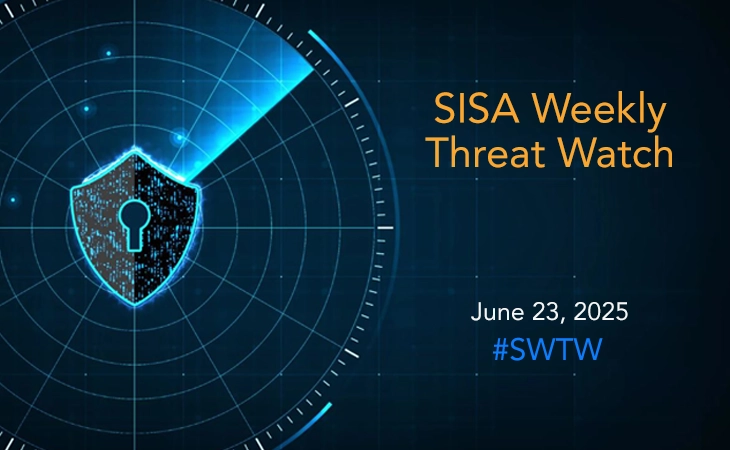

What is PCI DSS Compliance? A Comprehensive Guide for the Payments Industry
Discover the essentials of PCI DSS compliance in this comprehensive guide tailored for the payments industry.
The Payment Card Industry Data Security Standard (PCI DSS) is a set of security standards designed to ensure that all companies that accept, process, store, or transmit credit card information maintain a secure environment. Essentially, it’s a global benchmark aimed at protecting cardholder data from theft and fraud. Compliance with PCI DSS is not just a regulatory requirement; it’s a crucial step towards securing your business’s and customers’ financial information.
Achieving PCI DSS compliance is crucial for organizations handling cardholder information. This compliance standard equips businesses with the necessary tools to safeguard their customers’ sensitive payment information against both physical and cyber threats. By adhering to PCI DSS, companies can enhance their administrative and technical systems, fostering trust among consumers regarding the security of their payment data.
PCI DSS outlines a comprehensive set of technical and operational measures designed to protect cardholder data. This includes robust access control measures, stringent password management policies, and the enforcement of physical security protocols. It ensures that a business’s security policies and procedures are thoroughly documented, providing a clear roadmap for safeguarding sensitive information.
Moreover, PCI DSS compliance extends beyond the individual organization, promoting enhanced security practices throughout the supply chain. By requiring suppliers to adhere to the same stringent standards, businesses can ensure a uniformly high level of data protection across all touchpoints. The standard specifies 12 critical controls that apply to both merchants and service providers, forming the backbone of a robust PCI compliance program.
Since its inception, the Payment Card Industry Data Security Standard (PCI DSS) has evolved through multiple updates to address the ever-changing cyber threat landscape. While the core principles of compliance have remained steady, the standard has been augmented with new requirements to tackle emerging challenges.
The latest version, PCI DSS 4.0, introduced in March 2022, brought significant enhancements aimed at bolstering multifactor authentication and password management protocols. Additionally, it introduced standards to combat phishing and adapt to the nuances of e-commerce. A notable advancement in this iteration is the requirement for organizations to clearly define roles and responsibilities for meeting each compliance requirement. To accommodate the rapid evolution in payment technologies, version 4.0 also expanded the framework to offer more flexibility and customization options for organizations employing diverse methods to maintain security. Entities are given a transition period until March 2025 to align with the new standards set by PCI DSS 4.0.
6 things you need to know to understand it better
PCI DSS compliance centers around three critical areas:
- Secure Data Ingress: Ensuring the secure collection and transmission of sensitive cardholder information from customers.
- Data Storage Security: Adhering to the 12 security domains outlined by PCI DSS, which cover encryption, continuous monitoring, and security testing of access to cardholder data. These range from installing and maintaining a firewall configuration to protect cardholder data, to regularly testing security systems and processes. Each requirement is designed to tackle specific vulnerabilities, ensuring businesses cover all bases in protecting customer data.
- Annual Validation of Security Controls: This includes the use of forms, questionnaires, external vulnerability scanning services, and third-party audits to confirm the implementation of required security measures.
Introduction to PCI Compliance Levels
In the world of electronic payments, safeguarding cardholder data is paramount. The Payment Card Industry Data Security Standard (PCI DSS) sets the compliance framework for organizations handling credit and debit card transactions. The classification into merchant levels is based on annual transaction volumes, dictating the rigor of compliance efforts needed. This classification affects the rigor of compliance validation needed, with Level 1 requiring an annual Report on Compliance (ROC) by a Qualified Security Assessor (QSA), while lower levels may only need to complete a Self-Assessment Questionnaire (SAQ).
- PCI Level 1: For businesses processing over 6 million transactions annually. These are typically large, multinational entities that must undergo a comprehensive assessment by a Qualified Security Assessor (QSA).
- PCI Level 2: Aimed at medium-sized businesses with 1 to 6 million transactions per year, requiring an annual Self-Assessment Questionnaire (SAQ) and possibly quarterly network scans by an Approved Scanning Vendor (ASV).
- PCI Level 3: Small businesses processing 20,000 to 1 million transactions annually must complete an SAQ and may also need quarterly network scans.
- PCI Level 4: The smallest merchants, processing fewer than 20,000 transactions a year, are subject to an annual SAQ and potentially quarterly network scans.
Conducting an Internal Risk Assessment
A critical step in PCI compliance is performing an internal risk assessment to identify potential vulnerabilities within your information systems. This involves:
- Differentiating between production and non-production environments.
- Cataloging critical systems and controls.
- Assessing business risks, assigning probabilities, and impacts.
- Implementing policies to mitigate identified risks.
Avoid common pitfalls like infrequent security reviews and working in isolation without external expert consultations for a comprehensive risk analysis.
Gap Analysis and Remediation
PCI DSS gap analysis is an essential early step in the compliance journey, helping organizations identify where they currently stand and what measures they need to implement to achieve compliance. This process, typically spanning 5-7 days, involves:
- Identifying control deficiencies.
- Remedying or implementing new controls to meet compliance requirements.
- Utilizing assessors to map out critical information processes and technical infrastructure against PCI DSS requirements.
Policies and Procedure Mapping
Mapping internal controls against PCI DSS objectives is crucial for protecting data throughout its lifecycle within your organization. This stage also involves:
- Identifying and justifying out-of-scope items for a focused audit process.
- Leveraging PCI automation tools for a comprehensive overview of policy mappings and security measures, ensuring no critical evidence is overlooked during audits.
Ongoing Monitoring and Maintenance
PCI compliance is not a one-time achievement but a continuous process that adapts to evolving data flows and customer interactions. Larger businesses, particularly those processing over 6 million transactions annually, may be required to submit regular reports or undergo annual assessments to validate continuous compliance. Regular testing of security systems and processes plays a pivotal role in maintaining PCI DSS compliance. This includes quarterly network scans by an Approved Scanning Vendor (ASV) and annual penetration testing. These tests ensure that the protective measures you’ve put in place continue to guard against evolving threats.
Creating a dedicated PCI compliance team with cross-departmental representation—including security, technology/payments, finance, and legal departments—can provide a structured approach to maintaining compliance year-round.
Conclusion
Encompassing substantial fines, reputational damage, and the potential loss of payment processing capabilities. Specifically, non-compliant entities risk fines up to $500,000 per incident, elevated transaction fees, or complete revocation of card processing privileges in the wake of a data breach. The erosion of customer trust, perhaps even more damaging, can have enduring negative effects on a business.
Conversely, the advantages of maintaining PCI DSS compliance extend far beyond the mere avoidance of penalties. It cultivates customer confidence by ensuring their data is securely handled and establishes a robust cybersecurity framework that minimizes the likelihood and severity of data breaches. Achieving compliance is an investment in a security-minded organizational culture that yields benefits for all stakeholders.
Ultimately, PCI DSS compliance is indispensable, serving as both a regulatory mandate and a cornerstone of a holistic data security strategy. It equips businesses with the necessary guidelines to advance their security measures, safeguarding customer information and enhancing the overall trust and integrity of their payment systems.
Latest
Blogs
Whitepapers
Threat-a-Licious
Customer Success Stories

SISA is a Leader in Cybersecurity Solutions for the Digital Payment Industry. As a Global Payment Forensic Investigator of the PCI Security Standards Council, we leverage forensics insights into preventive, detective, and corrective security solutions, protecting 1,000+ organizations across 40+ countries from evolving cyberthreats.
Our suite of solutions from AI-driven compliance, advanced security testing, agentic detection/ response and learner focused-training has been honored with prestigious awards, including from Financial Express, DSCI-NASSCOM and The Economic Times.
With commitment to innovation, and pioneering advancements in Quantum Security, Hardware Security, and Cybersecurity for AI, SISA is shaping the future of cybersecurity through cutting-edge forensics research.
Company
Resources
Quick Links
Copyright © 2025 SISA. All Rights Reserved.
 USA
USA India
India APAC
APAC Middle East
Middle East Global
Global





 Facebook
Facebook Linkedin
Linkedin  X
X Youtube
Youtube





